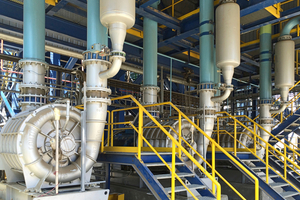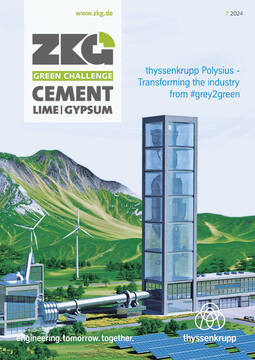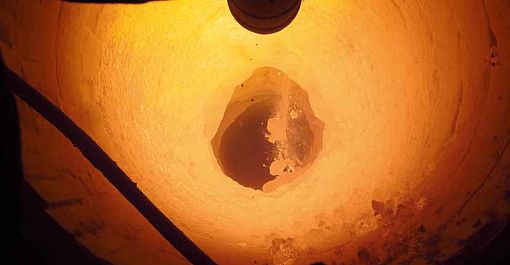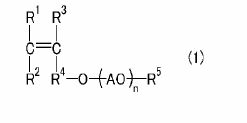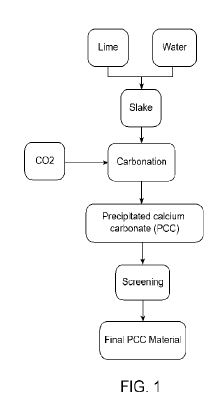Always the right pre-pressure: Blowers as a driving force in the cement industry
In the cement production process, CO2 is not just a footnote, but is now a challenge
that the industry is facing. The main source of CO2 emissions is the calcination
of limestone, a key step in the production of cement clinker. During the chemical process, calcium carbonate is converted into calcium oxide, releasing significant amounts of CO2. There are also additional emissions from the combustion of fossil fuels, which are required to reach the high temperatures in the rotary kiln.
From emission to resource
Faced with increasing demands for climate protection, the cement industry is working hard to improve its carbon footprint through innovative technologies such as carbon capture and storage (CCS), the use of alternative fuels and reducing the proportion of clinker in cement.
In addition to the challenge of disposing of “unwanted” CO₂, there are also opportunities to put the by-product to good use: Some of the released CO₂ can be reabsorbed during the use and hardening of concrete through the natural carbonation process. The calcium hydroxide (Ca(OH)₂) present in the concrete reacts with CO₂ from the air and forms calcium carbonate (CaCO₃). However, this process is very slow and only compensates for a small proportion of the emissions generated during cement production.
Further approaches have been developed to make CO₂ binding in concrete more efficient: By introducing CO₂ under pressure in special curing chambers, carbonation can be significantly accelerated. The use of alternative binders such as magnesium oxide (MgO) and the optimization of the concrete mix and surface structure also enhances CO₂ absorption. These methods not only reduce the CO₂ footprint of the cement and concrete industry, but also optimize the material properties of the concrete.
In the cement industry, blower technologies are used as a preliminary stage for the separation and compression of CO₂ in order to convey gases and bring them to a certain pressure level before they are further compressed in screw or piston compressors.
Significant relief for compressors
In carbon capture and storage (CCS), CO₂ is separated from the exhaust gases of the cement production process, liquefied and prepared for geological storage or for the concrete production process. Liquefaction requires high pressures of 35-70 bar in some cases, which are generated by screw or piston compressors. The following rule of thumb applies here: the larger the volume of gas to be sucked in, the larger the compressor must be designed for it. Under atmospheric conditions, processing 15 t of CO2, for example, corresponds to a volume of around 8000 m3. If an inlet pressure of 1 bar is taken into account, the gas volume is almost halved and the compressor can be designed smaller. The total volume and the number and size of the compressors determine when a pre-booster blower is worthwhile. As a rule, a delivery capacity of 12000 cbm is a typical limit for compressors.
In many cases, the pre-pressure can be generated using blower technologies, which are far less expensive than the downstream compressors. Pre-booster blowers from Continental Industrie in Dormagen, which are used before the actual compression, are designed for a wide operating range. This means that a large selection of blowers can be flexibly matched to the individually required parameters such as starting current, speed, pressure and power.
“Blowers with a pressure increase of up to 1 bar and a high turn-down range of up to 50% are the first choice for reducing gas volumes to 50%,” says Tobias Boeckh, Managing Director of Continental Industrie. “They clearly increase the overall efficiency of the condensing process. As they are also easy to maintain, low-turbulence and pulsation-free, a lot has already been gained. The entire process becomes interesting for our blowers starting from a throughput of 4-5 t/h.”
The role of blower technologies
“For over 15 years, Continental Industrie has been supplying blower technologies for pre-compression, which are particularly suitable for CO2 liquefaction in the cement industry. The production process in the cement industry generates large quantities of CO2, which can be fed back into the production cycle with the help of Carbon Capture and Utilization (CCU). This not only helps to reduce overall emissions, but also enables the chemical reactions in the production process to be optimized,” says Tobias Boeckh. “In the cement industry, sometimes up to ten blowers are required as pre-booster blowers in a production line for CO2 liquefaction. So there is a need for it.”
Continental blowers are manufactured in Central Europe and can be used in CO2 liquefaction processes within three to five months. Thanks to their compact design and complete assembly on a base frame, they leave the factory ready for operation and can be integrated into the production process immediately.

